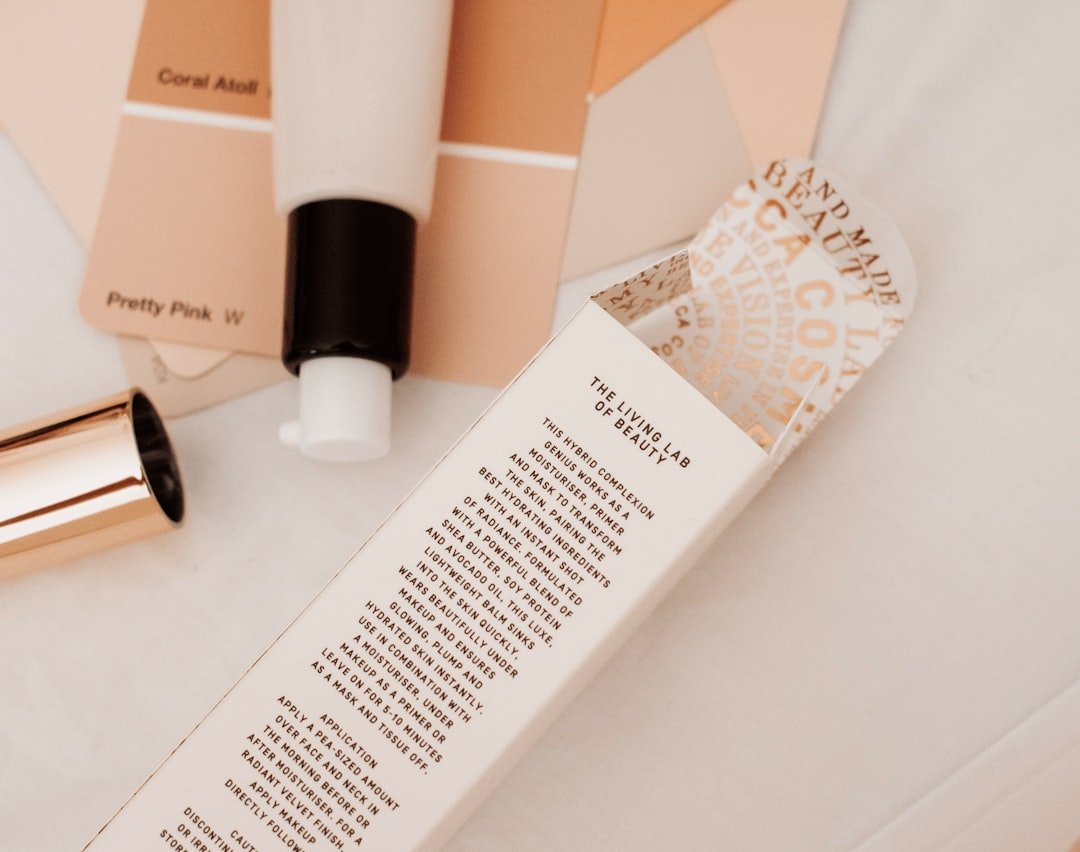Wrinkles and fine lines are a natural part of the aging process, but understanding their causes can help individuals take proactive steps to minimize their appearance. One of the primary factors contributing to the development of wrinkles is the gradual loss of collagen and elastin in the skin. These proteins are essential for maintaining skin’s firmness and elasticity.
As we age, our bodies produce less of these vital substances, leading to sagging skin and the formation of fine lines. Environmental factors also play a significant role; prolonged exposure to ultraviolet (UV) rays from the sun can damage the skin’s structure, accelerating the aging process. Additionally, lifestyle choices such as smoking, poor diet, and inadequate hydration can exacerbate the formation of wrinkles, making it crucial to adopt healthier habits.
Another significant contributor to wrinkles is the natural decrease in skin cell turnover that occurs with age. Younger skin regenerates more quickly, allowing for a fresh and youthful appearance. However, as we age, this process slows down, leading to a buildup of dead skin cells that can make fine lines more pronounced.
Furthermore, repetitive facial movements—such as frowning, squinting, or smiling—can lead to dynamic wrinkles, which become etched into the skin over time. Understanding these underlying causes is essential for anyone looking to address the signs of aging effectively. By recognizing how both intrinsic and extrinsic factors contribute to wrinkles, individuals can make informed decisions about skincare and makeup that cater specifically to their needs.
Choosing the Right Makeup Products for Mature Skin
Selecting makeup products that cater specifically to mature skin is crucial for achieving a flawless look while minimizing the appearance of wrinkles and fine lines. One of the first considerations should be the formulation of the products themselves. Opting for hydrating foundations or tinted moisturizers can provide a dewy finish that helps to plump the skin and create a smoother canvas.
Ingredients such as hyaluronic acid, glycerin, and peptides are beneficial as they not only provide moisture but also help improve skin texture over time. Additionally, avoiding heavy or matte foundations is advisable, as they can settle into fine lines and accentuate imperfections rather than conceal them. In addition to foundation, other makeup products should also be chosen with care.
Cream-based blushes and highlighters tend to blend more seamlessly into mature skin compared to powder formulations, which can cling to dry patches and enhance the visibility of wrinkles. When it comes to eye makeup, selecting creamy eyeliners and eyeshadows can prevent tugging on delicate eyelid skin while providing a more vibrant color payoff. Moreover, it’s essential to consider the shade selection; softer, neutral tones often work best for mature skin as they create a more natural look without overwhelming the features.
By carefully selecting makeup products that prioritize hydration and blendability, individuals can enhance their beauty while addressing the unique challenges posed by aging skin.
Prepping Your Skin for Makeup Application
Properly prepping the skin before applying makeup is a vital step that can significantly impact the final look. The first step in this process is cleansing the face with a gentle cleanser that removes impurities without stripping away essential moisture. Following cleansing, applying a hydrating toner can help restore balance to the skin and prepare it for subsequent products.
This step is particularly important for mature skin, which may be drier and more sensitive than younger skin types. After toning, incorporating a rich moisturizer or serum infused with antioxidants can provide an additional layer of hydration and nourishment, ensuring that the skin feels plump and smooth before makeup application. Another essential aspect of skin prep is the use of a primer designed for mature skin.
A good primer can create a smooth base for makeup application while also filling in fine lines and pores. Look for primers that contain silicone or other smoothing agents that help blur imperfections without feeling heavy on the skin. Additionally, some primers offer illuminating properties that can give the complexion a radiant glow, counteracting any dullness that may come with aging.
By taking the time to properly prep the skin with cleansing, toning, moisturizing, and priming, individuals can create an ideal canvas that enhances makeup application and longevity.
Techniques for Applying Makeup to Minimize the Appearance of Wrinkles
| Technique | Description |
|---|---|
| Moisturizing | Applying a moisturizer before makeup to hydrate the skin and minimize the appearance of wrinkles. |
| Primer | Using a primer to create a smooth base for makeup application and fill in fine lines. |
| Lightweight Foundation | Choosing a lightweight, liquid foundation to avoid settling into wrinkles. |
| Concealer | Using a concealer to cover up any deeper wrinkles or fine lines. |
| Setting Powder | Applying a setting powder to help makeup stay in place and prevent creasing. |
| Avoiding Shimmer | Avoiding shimmery or glittery makeup products that can accentuate wrinkles. |
When it comes to applying makeup on mature skin, employing specific techniques can make all the difference in minimizing the appearance of wrinkles and fine lines. One effective method is to use a light hand when applying foundation or concealer. Instead of layering on thick products that can settle into creases, opt for a stippling technique using a damp makeup sponge or a soft brush.
This approach allows for even distribution of product while maintaining a natural finish. Additionally, focusing on areas that require coverage rather than applying foundation all over can help avoid an overly cakey appearance. Another technique involves using layering strategically to build coverage without overwhelming the skin.
For instance, when applying concealer under the eyes or on blemishes, use a small amount and blend it out gently with your fingertip or a brush. This method allows for better control over product placement and ensures that it doesn’t settle into fine lines. Furthermore, incorporating setting sprays or powders designed for mature skin can help lock in makeup without adding excess weight or texture.
By utilizing these techniques—such as stippling foundation and layering concealer—individuals can achieve a polished look while effectively minimizing the visibility of wrinkles.
Highlighting and Contouring for a Youthful Look
Highlighting and contouring are powerful techniques that can enhance facial features while creating a youthful appearance. For mature skin, it’s essential to approach these techniques with subtlety to avoid emphasizing fine lines or uneven texture. When highlighting, opt for cream or liquid formulas rather than powders; these products tend to blend seamlessly into the skin and provide a natural glow without settling into creases.
Focus on high points of the face such as the cheekbones, brow bones, and down the bridge of the nose to create dimension without overwhelming the overall look. Contouring should also be approached with care; instead of harsh lines that can appear stark against mature skin, use soft shades that mimic natural shadows. A cream contour product applied with a light hand can define areas like the jawline and temples without looking overly dramatic.
Blending is key—using a damp sponge or brush ensures that contour blends seamlessly into foundation for a more natural effect. By mastering these highlighting and contouring techniques tailored for mature skin, individuals can achieve a youthful radiance while enhancing their natural beauty.
Setting Your Makeup to Prevent Creasing and Settling into Lines
Understanding the Importance of Setting Makeup
Setting makeup is a crucial step in ensuring that your makeup lasts throughout the day and prevents creasing, especially for those with mature skin prone to fine lines. The right setting products can make all the difference in this process.
Choosing the Right Setting Products
When it comes to setting products, lightweight setting powders designed specifically for mature skin are ideal. These powders provide a matte finish without adding excess texture or weight to the skin. To apply setting powder effectively, use a fluffy brush and apply it sparingly in areas where creasing is most likely to occur, such as under the eyes and around the mouth. Avoid dusting it all over the face, as this can accentuate fine lines.
The Benefits of Setting Sprays
In addition to powder, setting sprays can be incredibly beneficial in locking in makeup while providing hydration throughout the day. Look for sprays that contain ingredients like aloe vera or rose water, which can help keep the skin feeling fresh without drying it out. A light mist after completing makeup application not only helps set everything in place but also gives an added boost of moisture that combats any potential dryness from makeup products.
By utilizing both setting powders and sprays tailored for mature skin, individuals can maintain their makeup’s integrity while minimizing creasing and settling into fine lines.
Tips for Touching Up Throughout the Day
Throughout the day, touching up makeup may be necessary to maintain a polished appearance, especially for those with mature skin who may experience changes in texture or shine as time goes on. One effective strategy is to carry blotting papers in your bag; these handy sheets absorb excess oil without disturbing makeup underneath. Gently pressing a blotting paper against shiny areas—such as the forehead or nose—can refresh your look without adding additional layers of product that could contribute to creasing.
When it comes to reapplying foundation or concealer during touch-ups, less is more. Instead of layering on more product over existing makeup—which can lead to an overly heavy appearance—consider using a lightweight tinted moisturizer or BB cream applied with your fingers or a sponge for seamless blending. This technique allows you to even out your complexion without compromising your initial application.
Additionally, carrying a small travel-sized setting spray can help revive your makeup throughout the day; simply misting your face can refresh your look while providing hydration that combats dryness from prolonged wear.
Skincare Regimen to Complement Your Makeup Routine
A well-rounded skincare regimen is essential for complementing any makeup routine, particularly for those with mature skin looking to minimize wrinkles and enhance their overall appearance. The foundation of any effective skincare routine should include cleansing, exfoliating, moisturizing, and sun protection. Cleansing should be gentle yet effective; using a hydrating cleanser helps remove impurities without stripping away essential moisture from the skin.
Exfoliation is equally important but should be approached with caution; opting for chemical exfoliants like AHAs or BHAs can provide gentle resurfacing without causing irritation. Moisturizing is crucial for maintaining hydration levels in mature skin; look for products rich in hyaluronic acid or ceramides that help lock in moisture throughout the day. Additionally, incorporating serums containing antioxidants like vitamin C can help combat free radical damage while promoting an even skin tone.
Finally, never underestimate the importance of sun protection; daily application of broad-spectrum sunscreen is vital in preventing further sun damage and premature aging. By establishing a comprehensive skincare regimen tailored to mature skin needs, individuals can create an optimal base for makeup application while promoting healthier-looking skin over time.









